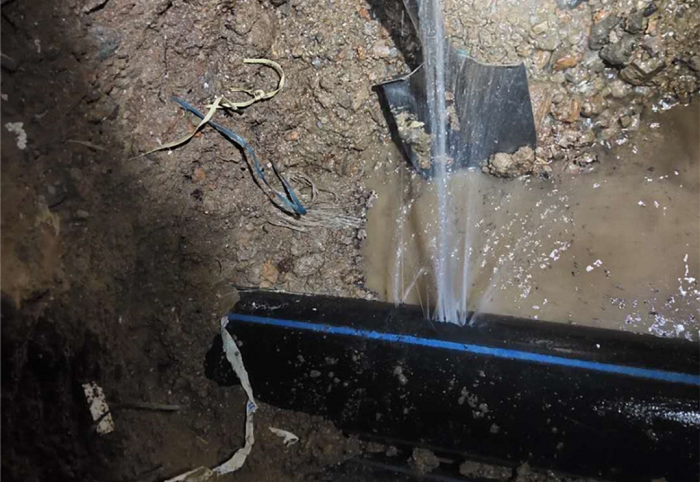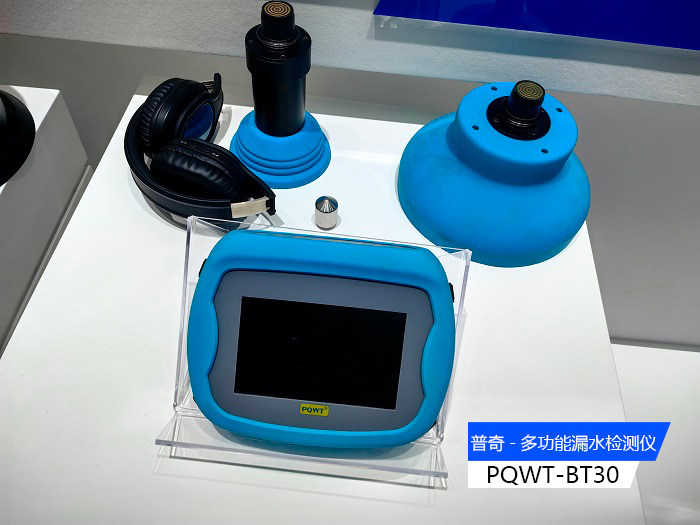With the acceleration of urbanization, the construction and management of water supply pipe networks are increasingly becoming a key part of urban infrastructure. However, the problem of pipe network leakage is still one of the major challenges facing the water supply industry. In order to ensure the stability and efficiency of water supply, it is necessary to analyze the causes of pipe network leakage comprehensively and take effective preventive and detection measures.

Second, the causes of pipe network leakage
Pipe network leakage for a variety of reasons, mainly including the following:
1. Poor quality of pipe materials: quality problems of pipe materials, such as cracks, sand holes, etc., are important factors leading to leakage.
2. Influence of geological and soil conditions: unstable geological conditions, such as uneven soil softness and hardness, high water table, etc., may lead to pipe deformation and rupture.
3. Poor interface quality: the quality of pipe interface, such as loose, disconnection, etc., is also a common cause of leakage.
4. Poor quality of construction: Problems in the construction process, such as improper treatment of pipe foundations, uneven quality of backfill, etc., may also lead to rupture of the pipe due to uneven stress.
5. Influence of temperature: Temperature changes may lead to thermal expansion and contraction of pipeline materials, resulting in stress fatigue, which in turn leads to leakage.
6. Influence of nearby construction: nearby construction may damage the pipeline, resulting in leakage.
7. Poor corrosion protection and aging of pipeline: Improper anti-corrosion measures or aging of pipeline for long-term use may make the pipeline corrosion thinning, which in turn leads to leakage.
8. Terrain settlement and load: terrain settlement or load changes may make the pipeline uneven force, resulting in distortion or rupture.
9. Pipeline network operating pressure is too high: pipeline network operating pressure is too high may make the pipeline under too much pressure, resulting in rupture.
10. Water hammer damage: water hammer phenomenon may lead to pressure fluctuations within the pipeline, resulting in damage.
11. Leakage of gate wells, meter wells and other ancillary facilities: the leakage of ancillary facilities may also trigger the leakage of the pipe network as a whole.
Third, the detection method of pipe network leakage
For the above reasons, different detection methods are needed to locate and repair the leakage. The following are some effective detection methods:
1. Flow test: by recording the flow data and analyzing it, it can be determined whether there is a leakage in a certain pipe or a certain water supply area. When implementing flow testing, care needs to be taken to select the appropriate flow meter and test point. Generally speaking, the test point should be selected in the branch of the pipe network, valves and other key locations. By comparing the normal and abnormal flow data, you can determine whether there is water leakage.
2. Pressure test: the magnitude of the pressure drop is related to the size of the leakage of water per unit of time, through the pressure test can determine whether there is a leakage of water in the pipeline. In the pressure test, you need to place the pressure gauge in the key position of the pipe network, record the pressure data at different points in time and make comparisons. If a large drop in pressure is found, water leakage may exist. Further inspection and repair work is required at this time.

3. Pipeline leak detector acoustic detection: water leakage will produce noise and vibration, through the pipeline leak detector acoustic detection means can determine the leakage point and locate the leakage area. Acoustic detection methods include the use of pipeline leak detector acoustic sensors, microphones and other equipment to detect water leakage acoustic signals. These signals can be analyzed and processed by computer software to determine the approximate location of the leak. This method is fast and accurate, but requires certain technical equipment and specialized knowledge.
4. Soil Moisture Test: Water leakage can lead to an increase in soil moisture in the surrounding area, and the suspected area of water leakage can be circled by soil moisture test. Soil moisture testing methods include the use of moisture sensors, moisture meters and other equipment to measure soil moisture data. Care needs to be taken when implementing the test to select the appropriate test site and avoid other factors (e.g. weather, soil type, etc.). If the soil moisture in one area is found to be significantly higher than in other areas, water leakage may be present.
5. Temperature test: relative to the surrounding media (such as air, soil, etc.), the tap water has a temperature difference, by testing the temperature change can determine whether there is a water leakage phenomenon. In the temperature test need to pay attention to the selection of appropriate temperature sensors and recording equipment, record the temperature data at different points in time and make comparisons. If the temperature in one area is found to be significantly higher than in other areas, there may be water leakage.








